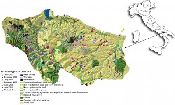|
LADA - Land degradadation assessment in drylands |
 |

|
FAO (Executing agency), UNEP (Implementing agency),
Global Environment Fund (GEF) (main donor). 2006-2010
|
Land degradation costs an estimated US$40 billion annually worldwide, without taking into account hidden costs of increased fertilizer use, loss of biodiversity and loss of unique landscapes.
The consequences of land degradation are reduced land productivity, socio-economic problems, including uncertainty in food security, migration, limited development and damage to ecosystems. Degraded land is costly to reclaim and, if severely degraded, may no longer provide a range of ecosystem functions and services with a loss of the goods and many other potential environmental, social, economic and non-material benefits that are critical for society and development.
The Land Degradation Assessment in Drylands project (LADA) started in 2006 with the general purpose of creating the basis for informed policy advice on land degradation at global, national and local level. This goal is to be realized through the assessment of land degradation at different spatial and temporal scales and the creation of a baseline at global level for future monitoring. The project will complete its activity by 2010.
|




